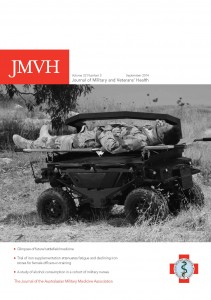Diagnosis and management of acute promyelocytic leukemia in an active duty Air Force space operator
Abstract
A 38 year-old United States Air Force active duty male in excellent health presented to the flight medicine clinic with a two week history of shortness of breath, fatigue, and unexplained bruising. Initial laboratory analysis was significant for pancytopenia with evidence of immature cells suggestive of leukaemia. The patient was admitted to hospital for emergency workup. Bone marrow biopsy and molecular analysis confirmed the diagnosis of acute promyelocytic leukaemia (APL). Induction therapy consisting of all-trans retinoic acid (ATRA) plus arsenic was promptly initiated and complete remission achieved after 35 days of treatment. Acute promyelocytic leukaemia, an extremely aggressive subtype of acute myeloid leukaemia, was considered to be one of the most deadly forms of cancer prior to the introduction of effective ATRA- based therapy in the late 1990s. Drawing parallels with the aviation environments’ crew resource management (CRM), we discuss the importance of team work and collaboration in military medical resource management (MMRM). Because the military health care infrastructure in the United States is complex and relies heavily on civilian medical services, the implementation of MMRM is important to ensure good outcomes in cases that require rapid diagnosis and treatment such as APL.




 Download the whole edition here.
Download the whole edition here.


